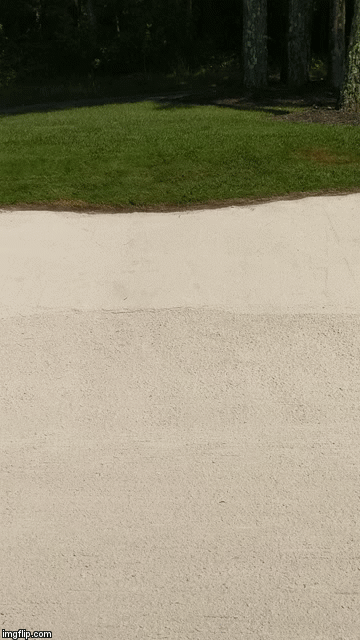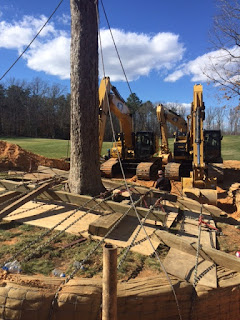*The following post was written by one of our senior assistants, Mike Nowicki. Not only did Mike provide the content for this blog, but he was the point guard throughout this entire project. Many thanks to Mike and our staff for a great start to our fall improvement phase.*
As part of our ongoing
efforts to improve Kinloch and ensure that we have one of the best and most
unique practice facilities in the golfing world, the decision was made to
convert the rough located between the chipping green farthest from the
clubhouse and the big range tee to approach height bentgrass. From an agronomic
stand-point, the tightly mowed turf will better tolerate the foot traffic and
wear this area experiences throughout the season. This will mitigate the
trampled look often seen at this location. Aesthetically it provides a clean
uniform look and a sense of connectivity between our short game area and the
driving range.
I would like to take a
few moments to walk you through the construction process. We began with stripping all sod to expose the soil
underneath. Roughly two inches of top soil was removed to expose a firmer clay
subsurface and to provide room for a sand cap. Once the subsurface was exposed it
became apparent that we needed to soften the slope from the green to the tee to
provide a smoother transition and easier walk. This was accomplished by dragging
soil from the high points to the low points using our box blade and dingo
excavator. Once we were pleased with the grade a plate compactor was run over
all areas that soil was moved to guarantee that we would not experience any
settling in the future as a result of this construction.
Next we used one of our
aerifiers set up with solid tines to poke holes in the clay at a depth of three
inches. This provides deep channels for sand which is a better medium for root
growth than the red clay found on the site and will allow for deep rooting
quickly after the sod is laid. Following this a two inch sand cap was added to
the entire site. The larger particle size of sand compared to clay allows it to
resist compaction thus promoting healthier bentgrass with much better traffic
tolerance. Sand was added in two stages, we put roughly one inch down then
watered it and compacted it then did the same again. This helps stabilize the
surface for when we place the sod making it easier to have a smooth finished
product.
Finally we begin to lay sod. Lines were painted to mark where the intermediate cut would go and that was sodded first to give us an idea if we liked how everything was framed. Bentgrass was then placed inside the intermediate cut. All bentgrass was taken from the far right target green on the driving range. This turf has been at Kinloch since grow in and has evolved to withstand the difficult climate. Using turf that is acclimated to this region gives this project the best chance for success. Immediately after all sod was placed the surface was rolled to smooth out any imperfections. The final step was to replace the sod taken from the target green with sod we bought from East Coast Sod. This turf will be allowed to grow in with minimal traffic stress and will blend flawlessly with the other target greens by next season.
The new approach
measures 3500 square feet and provides a seamless transition between our short
game and driving range. It was a relatively simple project that adds even more
character to an already phenomenal practice facility.



























